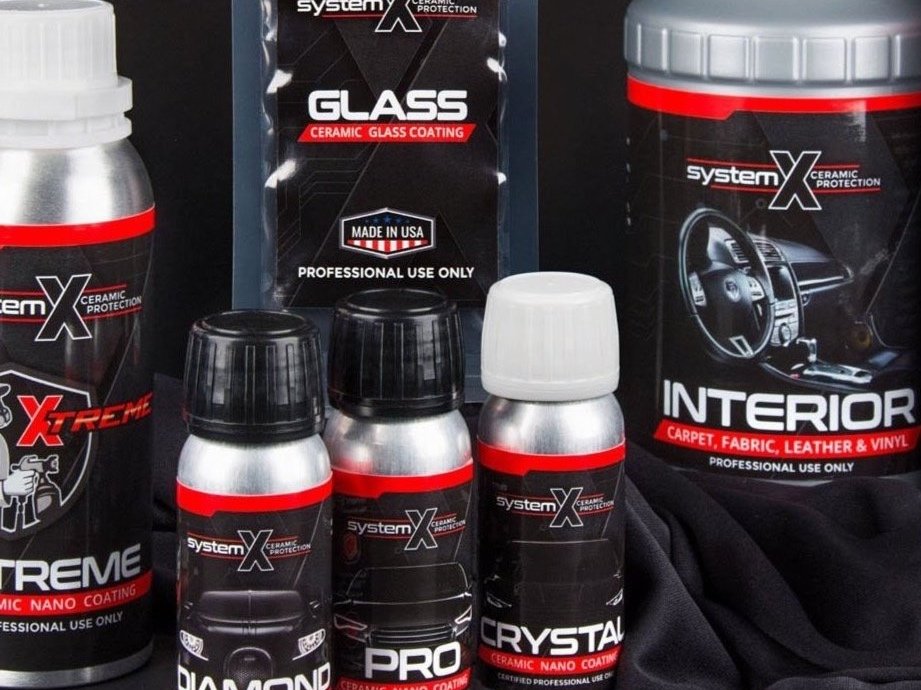Economical and Trusted Ceramic Coating Philadelphia Services for Your Cars and truck
Economical and Trusted Ceramic Coating Philadelphia Services for Your Cars and truck
Blog Article
Why Ceramic Finish Is the Ultimate Remedy for a Flawless Complete
Ceramic covering has actually emerged as a leading remedy for those looking for a perfect coating for their lorries, many thanks to its impressive toughness and safety attributes. What elements really set ceramic finishing apart?
What Is Ceramic Covering?

When applied correctly, ceramic finish develops a hydrophobic surface that wards off water and dust, making it easier to cleanse and keep. Unlike standard waxes or sealants, which normally supply short-lived protection, ceramic coverings can last for a number of years, relying on the item high quality and application approach. The procedure of using ceramic coating calls for careful prep work, including extensive cleaning and often repaint correction, to guarantee optimal bonding and performance.
Ceramic coatings are not restricted to automobile surfaces; they can additionally be used on numerous products, including glass, metal, and plastics, providing a functional remedy for boosting security. In general, ceramic layer stands for a significant innovation in surface area defense technology, combining both practical and visual advantages for a large range of applications.
Benefits of Ceramic Finishing
While several surface protection options exist, the advantages of ceramic finish attract attention as a result of its one-of-a-kind properties and durable efficiency. One of the main advantages is its extraordinary sturdiness. Ceramic Coating Philadelphia. Unlike traditional wax or sealants that require frequent reapplication, ceramic layers provide a durable layer that can last for numerous years, significantly minimizing upkeep efforts
An additional significant benefit is improved security versus environmental impurities. Ceramic finishes produce a hydrophobic surface that drives away water, dirt, and different toxins, making it easier to clean up. This feature not just protects the lorry's look however additionally reduces the danger of rust and oxidation, specifically in severe weather.
In addition, ceramic coverings offer superior resistance to UV rays, stopping fading and destruction of paint gradually. This UV protection is vital for keeping the aesthetic worth of surface areas and cars exposed to guide sunshine.
In addition, the glossy surface achieved with ceramic covering enhances the overall aesthetic charm, giving surface areas a showroom-quality sparkle. On the whole, ceramic coatings stand for a considerable advancement in surface area protection innovation, offering enduring advantages that deal with both useful and visual requirements.
Just How It Functions
Recognizing the science behind ceramic finishings discloses just how they give such impressive protection and longevity. At its core, a ceramic finish is a fluid polymer that chemically bonds with the lorry's manufacturing facility paint. This bonding develops a protective layer that is both read hydrophobic and oleophobic, repelling water, dirt, and oil. The main element of most ceramic finishings is silicon dioxide (SiO2), which is stemmed from quartz. This substance adds to the covering's solidity and resistance to scrapes, UV rays, and environmental contaminants.
The application procedure includes multiple actions, including surface prep work, which is vital to achieving ideal attachment. As soon as applied, the coating undertakes a treating process, during which it hardens and creates a semi-permanent bond with the paint surface. This bond is what identifies ceramic finishings from typical waxes and sealers, providing a longer-lasting protective barrier that can withstand for years.
Moreover, the density of the coating can improve its protective qualities, guaranteeing that it can hold up against rough conditions. Inevitably, the science of ceramic finishes integrates advanced products with innovative application methods to provide an unrivaled level of defense and visual improvement for lorries.
Contrast With Typical Techniques
When contrasted to conventional paint protection methods such as waxes and sealants,The benefits of ceramic coverings become specifically noticeable. While waxes use a momentary luster, usually lasting a couple of weeks to a number of months, ceramic coatings supply a lasting protective layer that can endure for several years. This durability significantly reduces the regularity of reapplication, making ceramic coatings a more cost-efficient option with time.
Additionally, standard techniques frequently need extensive prep work and several applications to attain an acceptable degree of defense. On the other hand, ceramic coverings bond at a molecular level with the car's surface, creating a robust shield versus ecological impurities like UV their explanation rays, acid rainfall, and road salts. This bond improves the lorry's resistance to scrapes and swirl marks, which prevail with conventional waxes and sealers.
Furthermore, the hydrophobic residential properties of ceramic coatings drive away water and dust, leading to easier cleansing and upkeep. On the other hand, wax and sealant-treated surface areas can draw in gunk, requiring even more constant cleaning - Ceramic Coating Philadelphia. Generally, ceramic finishes not only give premium defense yet likewise deliver a much more aesthetically attractive and long-lasting finish, developing them as the recommended option for discerning lorry proprietors
Application and Maintenance Tips

Utilizing a foam applicator, use the covering in small areas, adhering to the maker's standards relating to density and overlap. Enable sufficient curing time between layers, generally 24-hour, to make certain proper bonding. After application, it is essential to stay clear of exposure to water or harsh components for a minimum of a week to allow the layer to fully cure.
Additionally, using a ceramic maintenance spray can enhance the finishing's hydrophobic residential properties and longevity. Routine inspections for any kind of indicators of wear will aid preserve the finishing's stability and maintain that immaculate finish.
Final Thought
In verdict, ceramic coating arises as an exceptional option for accomplishing a flawless vehicle surface. By forming a robust bond with factory paint, ceramic finishing properly shields versus web link scrapes, UV rays, and ecological contaminants.

Report this page